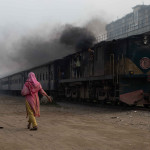Pure Drinking Water Management
Pure Drinking Water Management: Ensuring Safe Drinking Water Access in Urban Bangladesh
Access to pure drinking water is a fundamental human right and a cornerstone of public health, particularly in densely populated urban centers like Dhaka, Chattogram, and Khulna. However, millions of urban residents in Bangladesh face challenges in accessing safe and potable water due to pollution, aging infrastructure, mismanagement, and poor regulatory oversight.
This report analyzes the features, current conditions, and necessary reforms for effective drinking water management, with references to national data, field observations, and policy standards.
Key Features of Effective Pure Drinking Water Management
1. Source Protection
- Current Problem: River water sources like the Buriganga, Turag, and Shitalakshya are highly contaminated with industrial effluents and sewage.
- Solution Feature: Strict monitoring and enforcement of environmental laws (e.g., ECR 1997) to prevent dumping of toxic waste into freshwater sources.
2. Water Treatment Facilities
- Current Situation: While WASA operates 4 major treatment plants in Dhaka, inefficiencies, outdated technology, and poor maintenance compromise water quality.
- Solution Feature:
- Upgrade treatment technologies (e.g., membrane filtration, reverse osmosis).
- Real-time water quality monitoring at treatment outflows.
- Emergency backup systems for chemical balancing.
Example: Dhaka WASA’s Saidabad Water Treatment Plant has a capacity of 225 million liters/day, but frequent breakdowns reduce effective supply.
3. Pipe Network and Delivery Systems
- Problem: Leakage, illegal connections, and pipe corrosion lead to re-contamination even after treatment.
- Data Insight: A 2022 TIB report found 28% of Dhaka WASA water samples contaminated with coliform bacteria due to pipe leakage.
- Feature Solution:
- Replace old iron/steel pipes with food-grade HDPE pipes.
- GIS mapping and smart metering for leak detection.
- Regular flushing and pressure balancing.
4. Decentralized Filtration Points
- Feature:
- Install Community-Based Water Kiosks with UV and activated carbon filters in high-risk zones (slums, transport terminals, schools).
- Use solar-powered filtration for off-grid areas.
Case: UN-Habitat projects in Gazipur have piloted decentralized kiosks serving up to 500 people/day.
5. Public Access and Affordability
- Current Problem: Low-income groups pay 5–10 times more to buy jar/bottled water than piped users due to lack of access.
- Feature:
- Introduce subsidized household water connections for urban poor.
- Pre-paid public water dispensers using smart cards.
6. Water Quality Monitoring and Transparency
- WHO Standard: 0 CFU/100ml for E. coli; <0.3 mg/L iron.
- Feature:
- Monthly public release of test results from 10 zones.
- QR-code enabled quality check on public water taps.

Critical Analysis
Urban Inequality in Water Access
Urban slums and informal settlements are systematically excluded from piped networks, making them vulnerable to waterborne diseases. This perpetuates a water poverty trap, especially for women and children who spend hours collecting water.
Governance Challenges
Fragmented authority among WASA, municipalities, and health departments leads to accountability gaps. Decentralizing monitoring and involving ward-level committees could improve outcomes.
Health Impact
- A 2023 ICDDR,B study revealed 40% of diarrheal diseases in Dhaka children under 5 are linked to contaminated municipal water.
- Regular contamination includes E. coli, arsenic, and iron.
Strategic Recommendations
- National Water Quality Dashboard (real-time updates, citizen reporting).
- Decentralized Chlorination Points for emergency use during waterborne outbreaks.
- Urban Slum Integration through NGO partnerships and mobile filtration vans.
- Legal Reform to empower local bodies to penalize illegal connections and ensure quality.
Conclusion
Ensuring access to pure drinking water is a multidimensional task requiring technical upgradation, equitable delivery systems, public transparency, and strong regulatory frameworks. The health and dignity of urban citizens depend on how seriously this issue is addressed across all governance levels.


